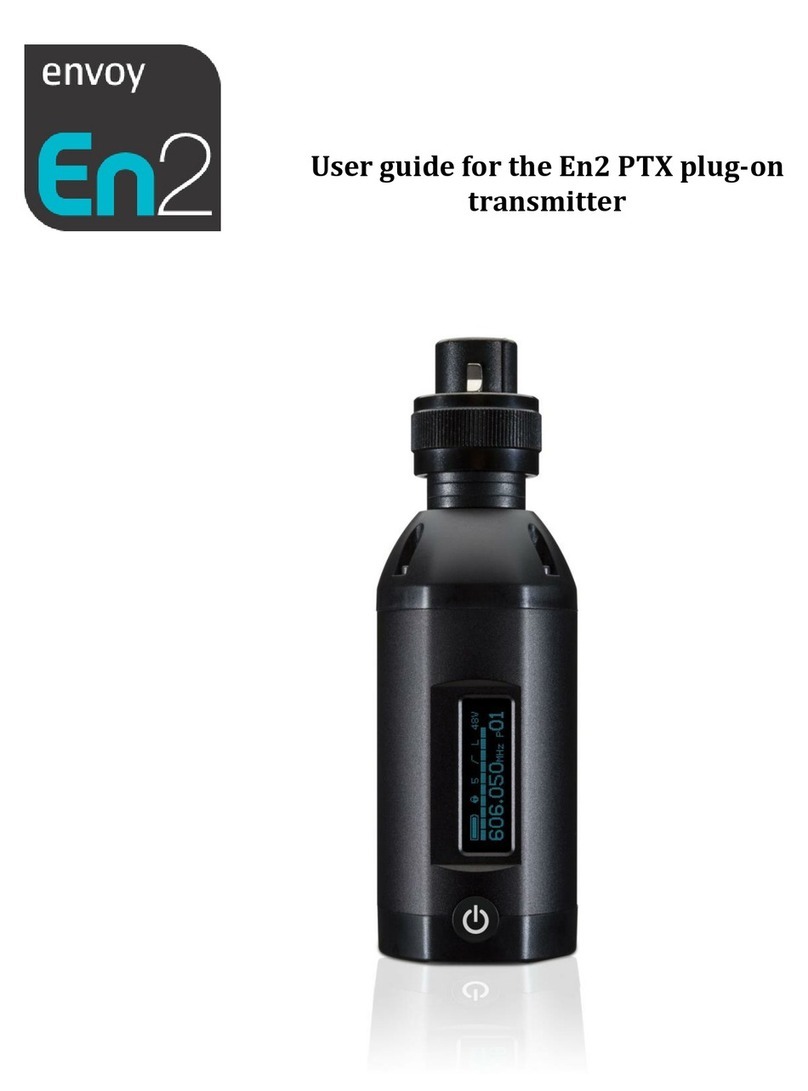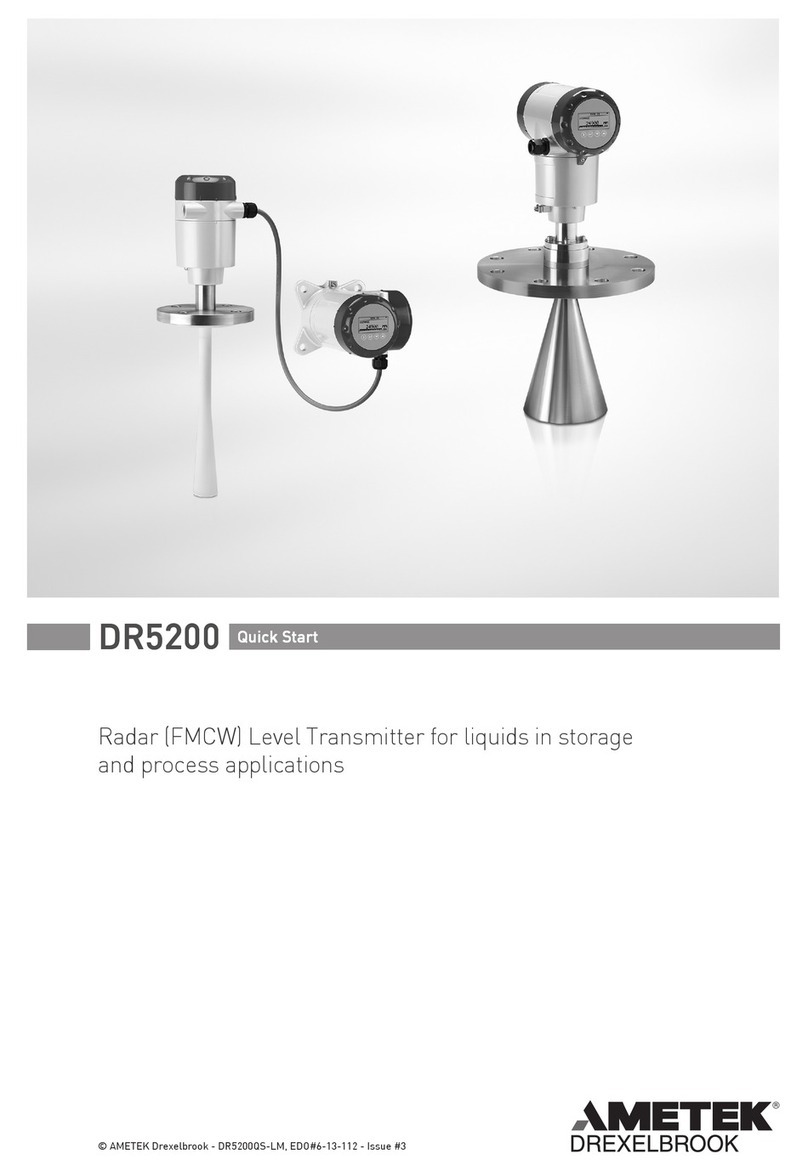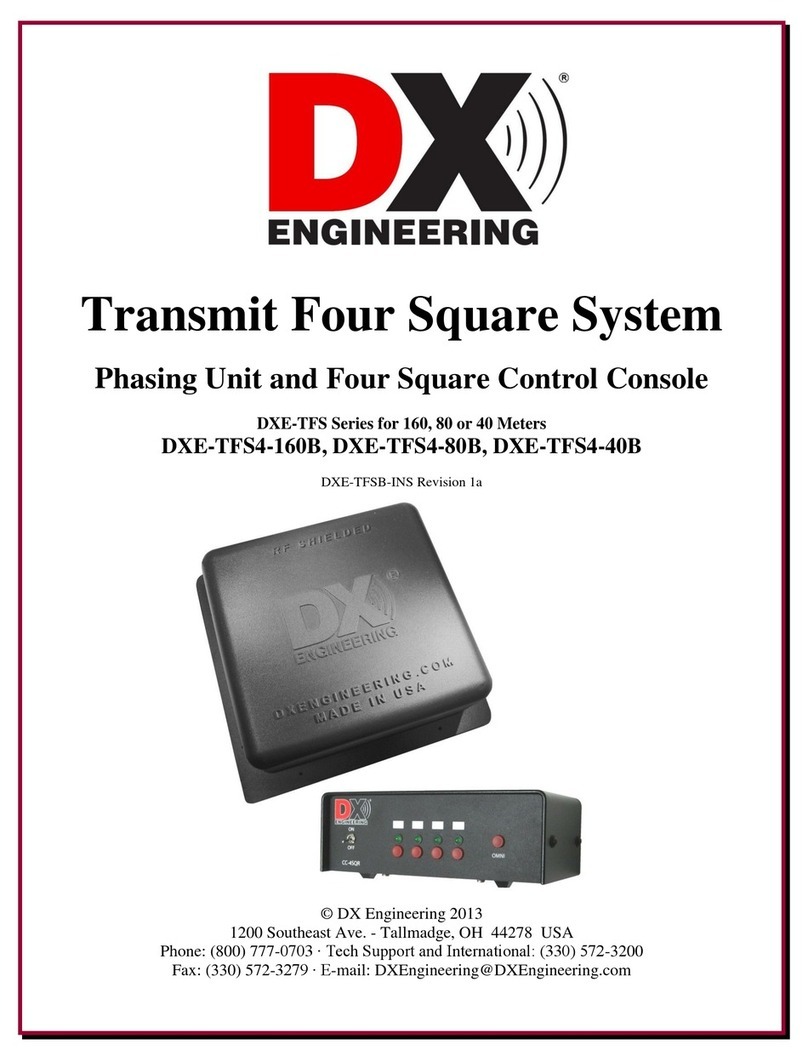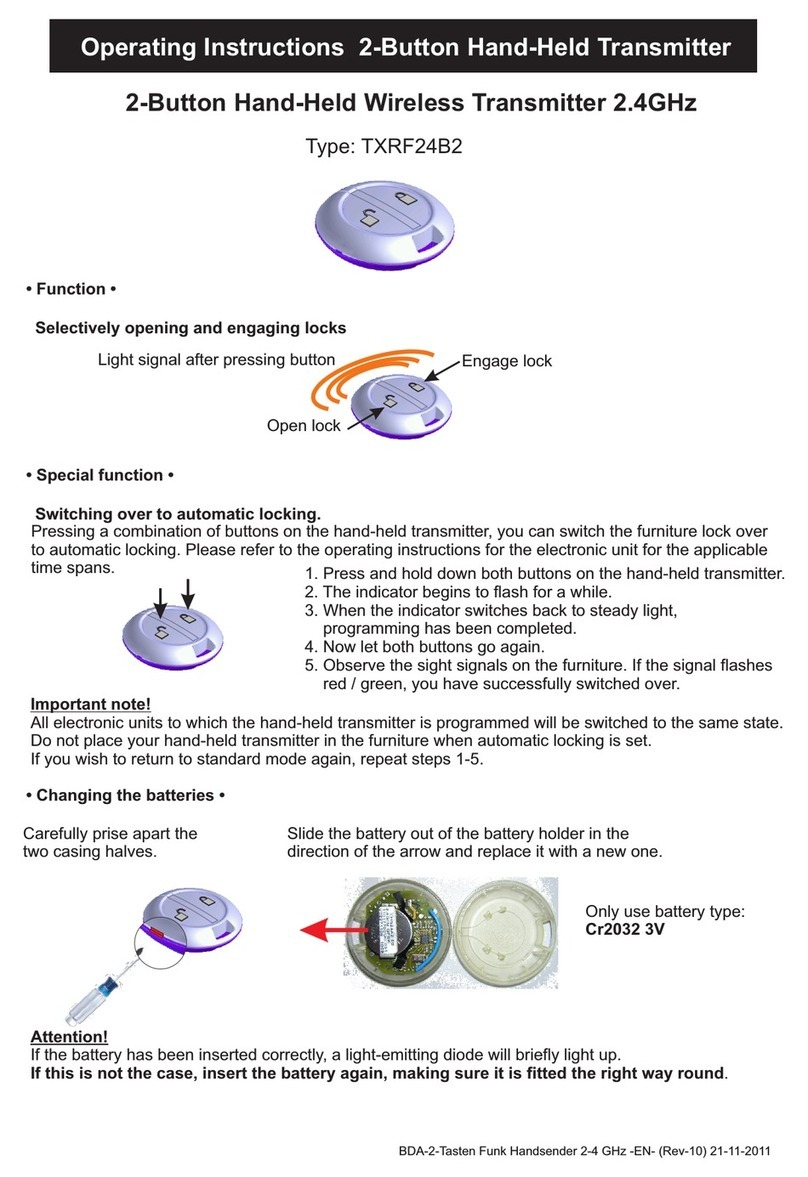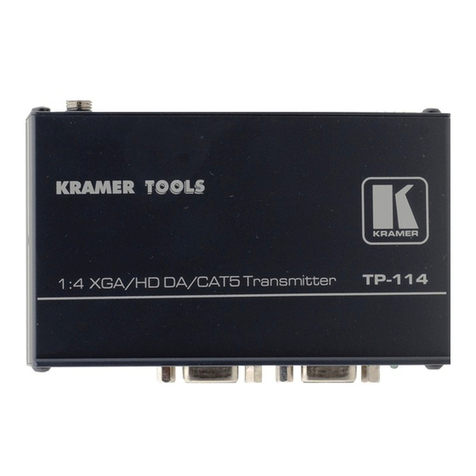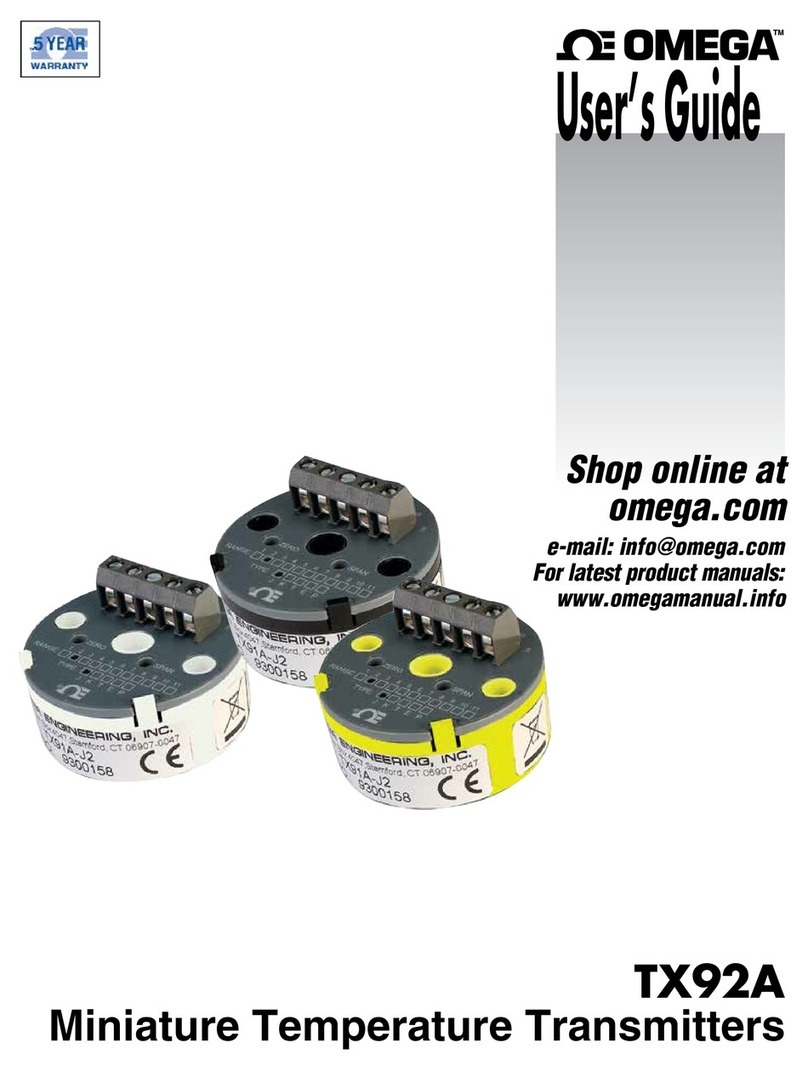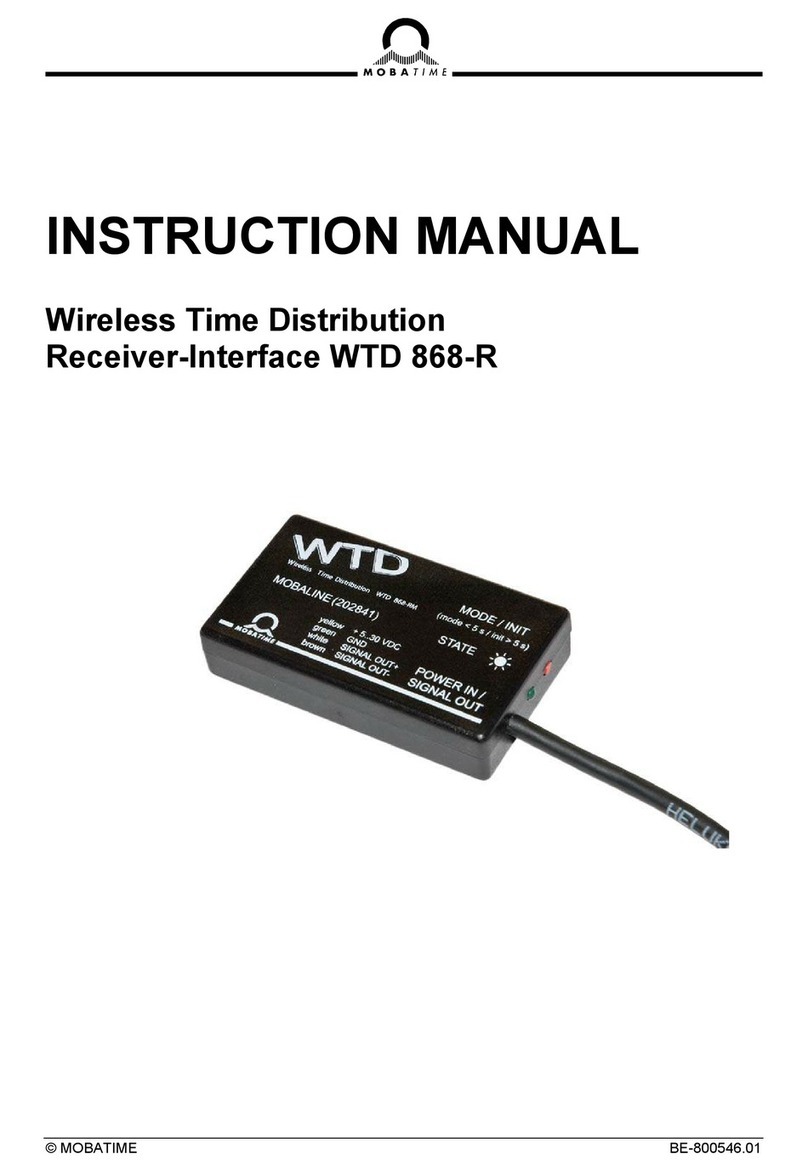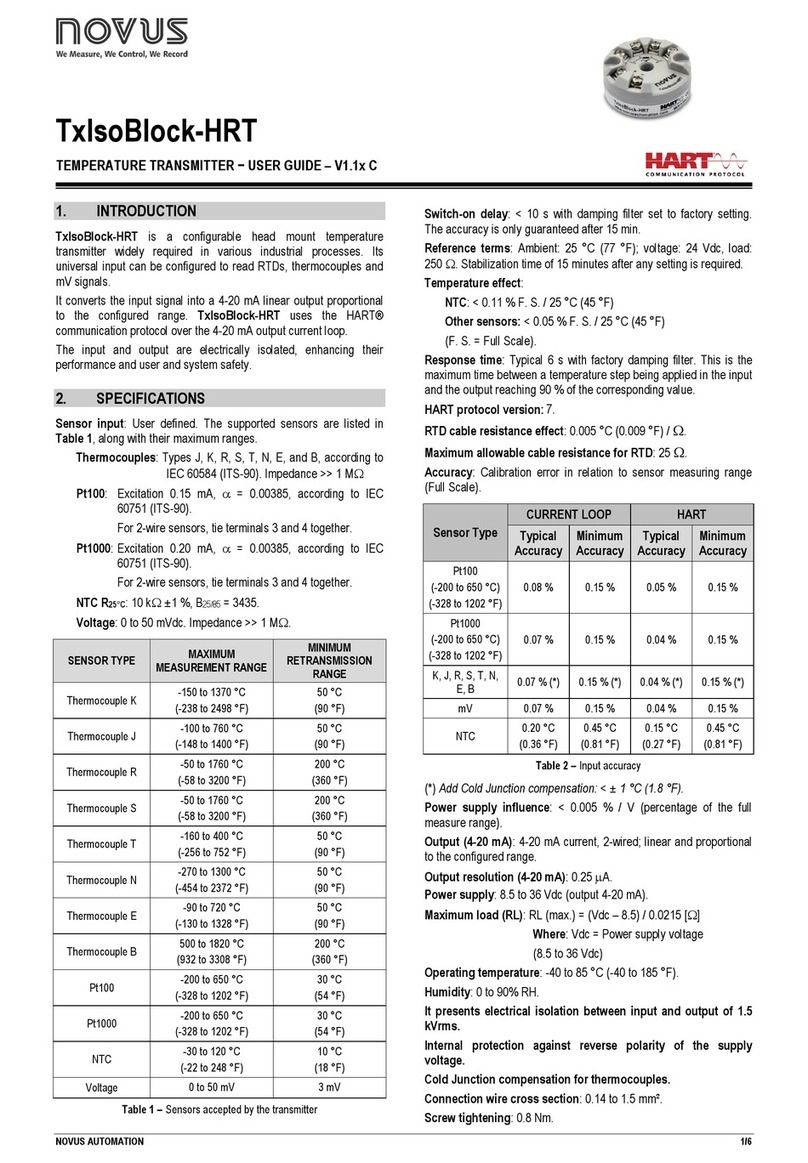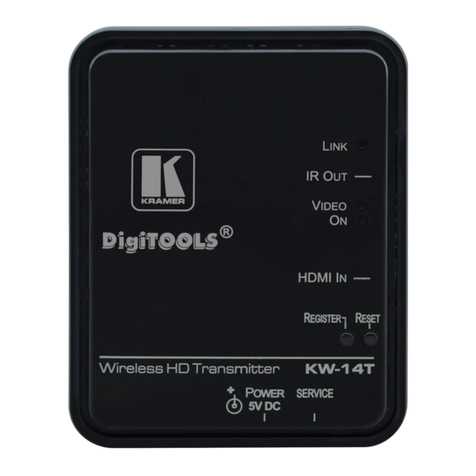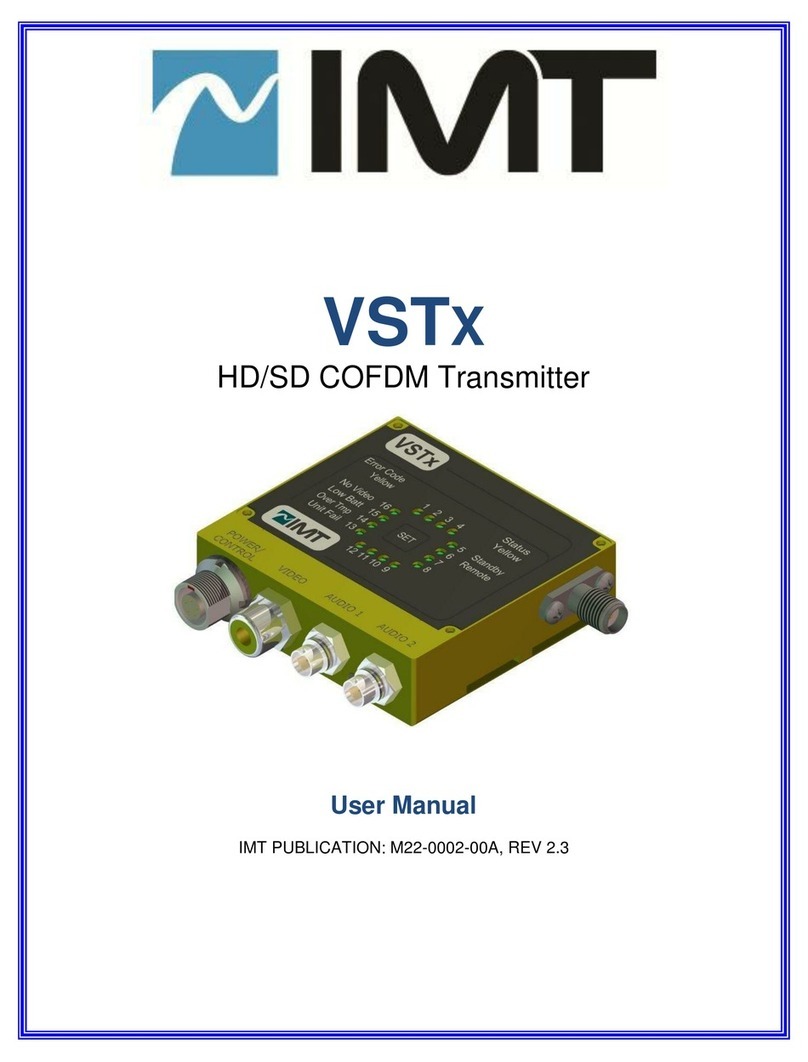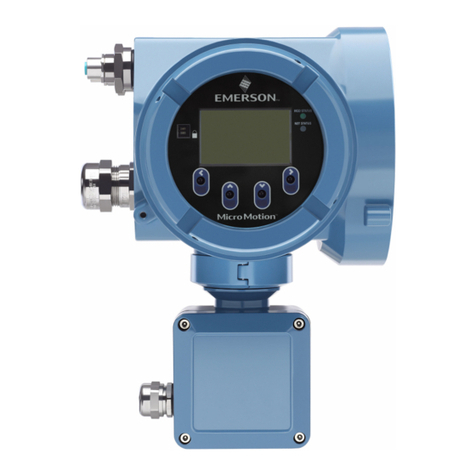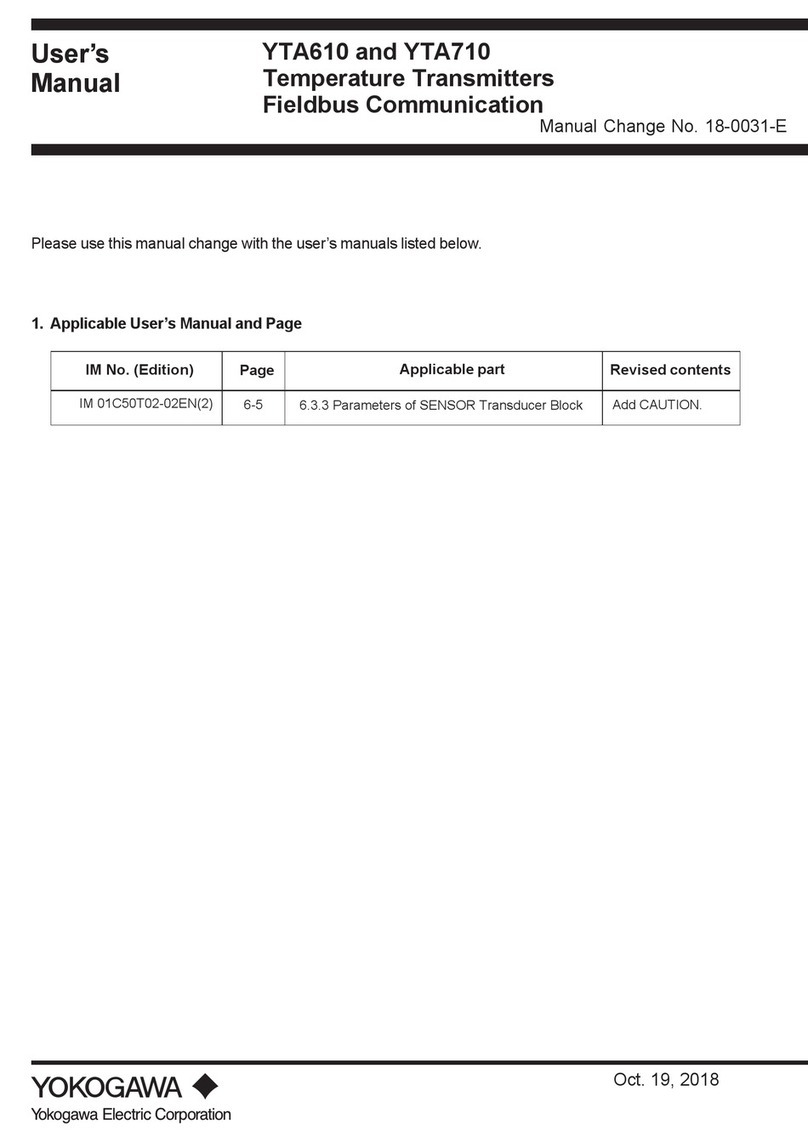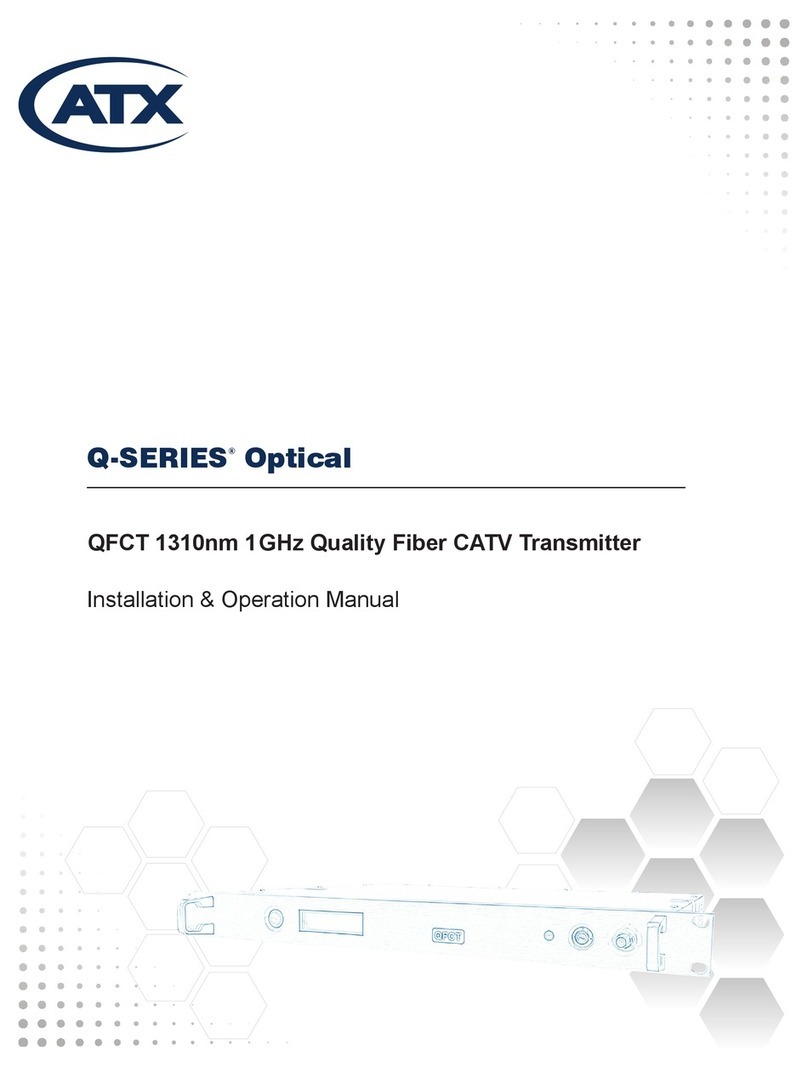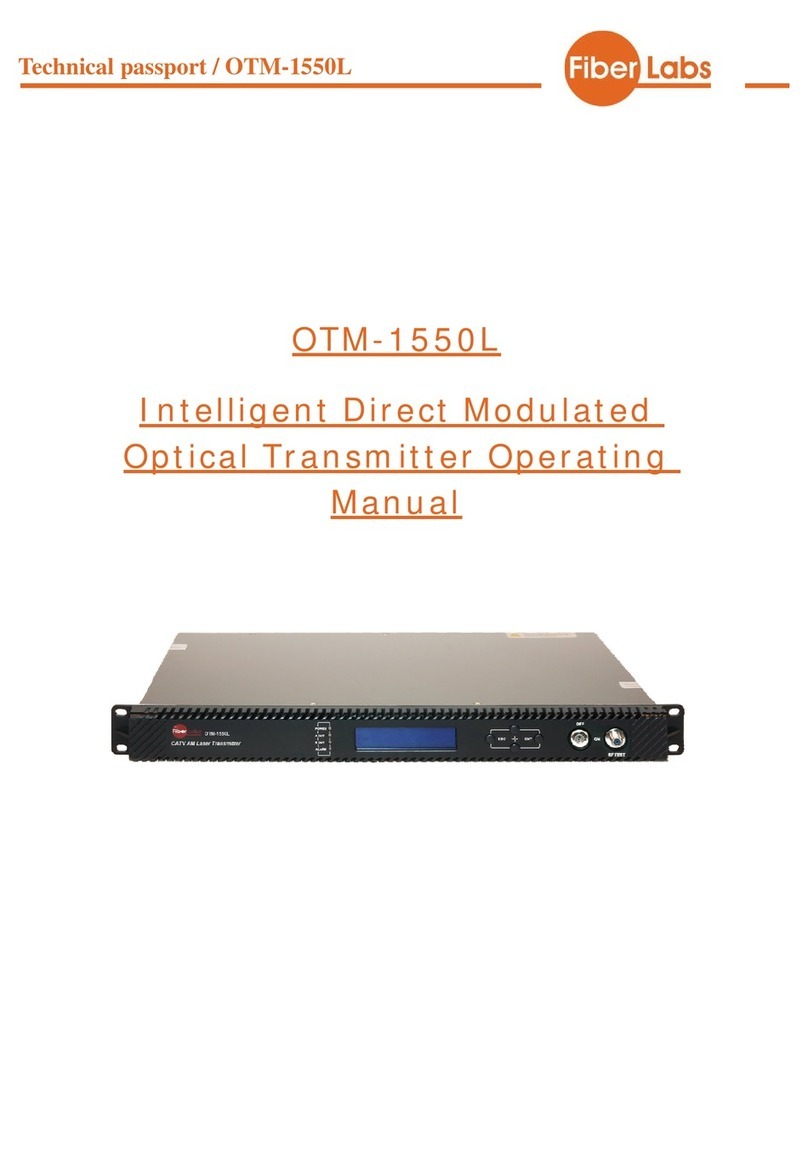Binsfeld RT406-2C User manual

Binsfeld Engineering Inc. | 231-334-4383 www.binsfeld.com 852400-9_J.doc
Installation Diagram
(Motor Shaft)
RT406
Rotor Base
(Original
Clamping Nut)
RT406
Rotor Module
(Original
Stator
Housing)
RT406
Stator Module
RT406-2C Rotary Temperature Transmitter (852-400)
The RT406-2C is a multi-channel temperature measurement system designed to
monitor and control temperature on heated godet roll shells. The system
features Dual CAN bus digital communication and is a drop-in replacement for
the 6-channel Neumag Multichannel Godet Controller used on Neumag S5 and
NPT machines.
Installation
(Refer to diagram)
1. Disconnect cables and remove existing transmitter
system from motor, including stator, rotor, and rotor
base.
2. Remove cover, circuit board assembly, and connectors
from original Stator Housing.
3. Set DIP switches 1 thru 5 on the RT406 stator to match
the switch settings on the original stator circuit board.
4. Set DIP-switch 6 to the OFF position.
5. Install Binsfeld RT406 Stator Module in housing and
secure with three screws.
6. Remove RT406 Rotor Module from metal Rotor Base by
removing 2 screws.
7. Screw RT406 Rotor Base on motor shaft and secure
with original clamping nut.
8. Insert RTD leads in terminals on Rotor Module per
diagram below and secure firmly with setscrews.
9. Reinstall Rotor Module on Rotor Base (2 screws) with
RTD lead wires contained in base. (Binsfeld
recommends using removable Loctite 222MS or
equivalent to secure Rotor screws.)
10. Mount Stator Housing to motor. (Do not reinstall Stator
Housing cover.)
11. Connect CAN bus interface cables to Stator Module.
12. Strain relief cables with tie wraps.
13. Discard original cover, stator circuit board, rotor module,
and base.
RTD 1
(BRN)
RTD 5 (WHT)
RTD 3 (GRY)
RTD 6
(RED)
RTD 4 (BLU)
RTD 2 (GRN)
COMMON
(BLK)
Rotor-RTD Wiring Diagram (Note color code)
COMMON (BLK)

This document is subject to change without prior notification.
Warranty
Binsfeld Engineering Inc. warrants that its RT406 Series Transmitters will be free from defective materials and workmanship for a period of two years
from the date of delivery to the original purchaser and that its products will conform to specifications and standards published by Binsfeld Engineering
Inc. Upon evaluation by Binsfeld Engineering Inc., any product found to be defective will be replaced or repaired at the sole discretion of Binsfeld
Engineering Inc. Our warranty is limited to the foregoing. Binsfeld Engineering Inc. disclaims any warranty of merchantability or fitness for intended
purpose.
Binsfeld Engineering Inc. | 231-334-4383 www.binsfeld.com 852400-9_J.doc
RT406-2C Rotary Temperature Transmitter (852-400)
Troubleshooting
Four green LEDs are used to indicate the operational status
of the RT406 system. If all LEDs are on solid, the system is
operating properly. If there are any flashing, flickering or
LEDs off, there is a problem or error in operation.
Stator LED
On solid: The Stator is functioning properly.
Flash: Power supply error, power supply out of range.
Off: No/Low power or fatal stator circuit error.
Rotor LED
On solid: Data is being received from the Rotor
and all RTDs are in range.
Flash slow: Intermittent data from the Rotor.
Flash fast: One or more of the RTDs measured out
of range (possibly open or shorted).
Off: No data from the Rotor.
CAN 1 LED
On solid: Messages are being properly sent and
received on CAN bus 1.
Flash/flicker: Intermittent errors on CAN bus 1.
Off: No communication on CAN bus 1.
CAN 2 LED
On solid: Messages are being properly sent and
received on CAN bus 2.
Flash/flicker: Intermittent errors on CAN bus 2.
Off: No communication on CAN bus 2.
Fault Condition Display Codes
When a fault condition exists the following temperature
will be displayed:
Fault Condition Display Value
System Resetting 252
RTD sensor out of range low (including short) 253
DIP Switch
The 8 position DIP switch is used to set the node
address on CAN bus 1. It also is used to select
termination resistors on CAN bus 1 and 2 if needed.
(The DIP switch is located under the Switch cover.)
Switches 1 –5
These 5 switches set the CAN bus 1 node address.
Set them the same as the unit that is being replaced.
Switch 6
Must be OFF for normal operation.
Switch 7
When on, this switch connects a 120 Ω termination
resistor across the CAN bus 1 lines. Leave OFF for
normal operation.
Switch 8
When on, this switch connects a 120 Ω termination
resistor across the CAN bus 2 lines. Leave ON for
normal operation.
RTD sensor out of range high (including open) 254
Rotor data error 255
Specifications
Rotor: Number of sensors: 6
Sensor connection: M3 set screw terminals with 2.38mm hole for ferrule access
Input sensor type: PT1000 RTD (1000 ohm at 0°C, alpha = .00385)
Sensor range: 0 –300°C
Speed: 10,000 RPM
Stator: I/O Connectors: CAN 1: 3-socket (Tyco Electronics PN: 6-1437719-6)
CAN 2: 5-pin (Tyco Electronics PN: 6-1437719-5)
I/O signals: CAN bus 1: 125k baud for communication with operator interface
CAN bus 2: 100k baud for communication with heater power controller
Power Input: 17 –30 VDC, 500mA (max)
General: Accuracy (max error) ±0.5°C (max over ambient operating temperature range for 0-300°C RTD range)
Operating Temperature 0 –85°C
Status Indicators
CAN bus 2
Connector
CAN bus 1
Connector
Stator
Indicator
CAN 1
Indicator
Rotor
Indicator
DIP
Switch
#1
CAN 2
Indicator
DIP
Switch
#8
This manual suits for next models
1
Other Binsfeld Transmitter manuals

